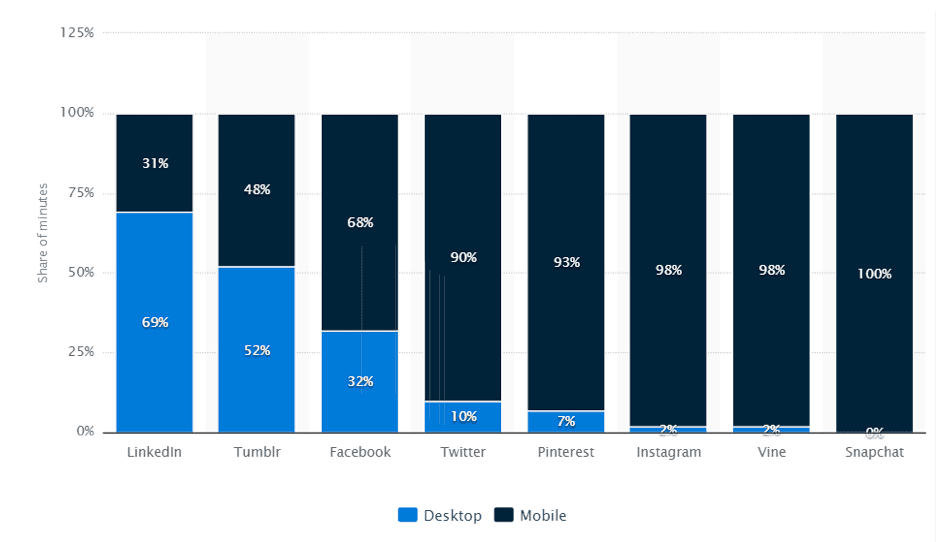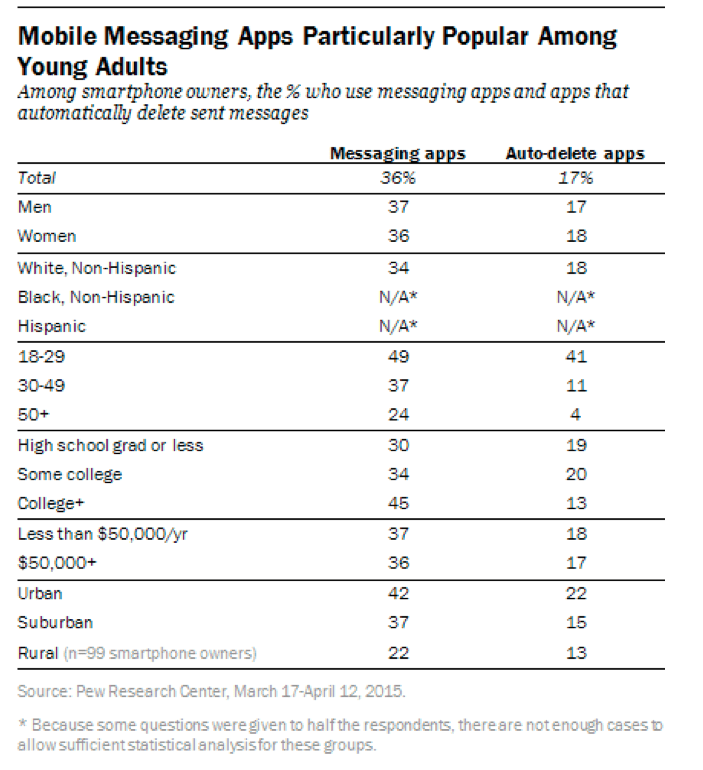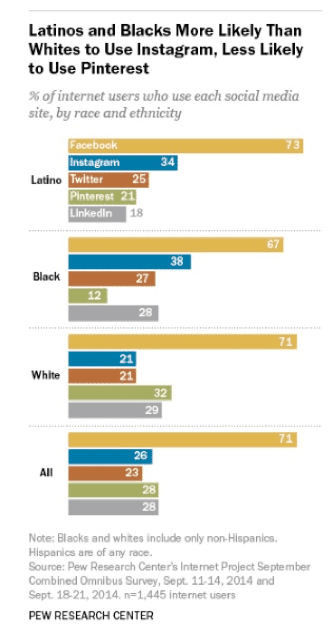Tricks are useful only if they actually work
As such, there are dozens of tips and trick out there on how to use social network platforms effectively.
Many of these tips just don’t work. Some of these tactics might have worked a few years ago. But as users change over time, so does social media. And some of these tricks never worked in the first place, even though they made sense. As new data starts coming in, we’re likely going to have to readjust the ways in which we use social media as a marketing tool.
1. More Hashtags Don’t Help
Most social media experts point out that using hashtags in your posts is going to drive your share rate up. And while that may be true, often times they leave out one very important fact. While one or two hashtags can have a positive impact, overusing them can actually drive followers away. It’s a really important distinction because it means that not only is it pointless to add more than three tags per post, but you can end up worse off than if you didn’t include any tags at all. It’s also important to realise hashtag effectiveness will vary by social network. Facebook, Twitter, Instagram and Google+ all have hashtages. A general rule of thumb is hashtags are hardly effective at all in Facebook and Google+, often effective in Twitter but only if you use a few, and very effectives in Instagram.
2. Linking Social Media Platforms Doesn’t Make You More Efficient
It may seem like a really good idea to use automated programs to send your content across different social network platforms at once. It can definitely be a smart way to let your followers know some important news and information.
But there’s a reason why there are so many different platforms. Each has its own strengths and downsides, and what works best for one, might not work as well for the other. The way in which these platforms are accessed differs quite a lot as well. All of these factors are going to influence the effectiveness of your content. You might save some time on the actual posting, but the content itself is going to be wasted.
3. Buying Followers Pointless
Most marketers have probably wised up to the fact that buying followers, whether they’re for Facebook, or Instagram or other social networks, is a really bad idea. Still, there are plenty of these fake followers online to make you think that some marketers that believe this is a valid tactic.
Even though most providers say the accounts are those of real people, most of them are in fact fake. This can really skew the perception of your follower base, and can render any attempt to discerns patterns and trends pointless. Plus, it doesn’t drive engagement up so much as it turns away real users.
4. Automated Direct Messages Are Not Engaging
Auto DMs sound like a brilliant way to save time and engage with your followers. And yet, statistics show that most users find these messages unwelcome and that they tend to diminish influence. And apparently, we’ve know this for some time. The figures are quite old, but it’s unlikely things have changed significantly. Why businesses still use these services is somewhat of a mystery.
Perhaps the promise of engaging your users without having to interact with them non-stop sounds tempting. It can save you a lot of time and money, but ultimately you might end up losing more than you’ve gained. If engaging with your followers directly is too much of a hassle, you’re better off interacting with them less often than bugging them with automated messages.
5. Replying to Every Little Thing Is a Waste of Time
Any good marketer understands that social network platforms should be used first and foremost to start conversations. That’s what they’re meant for, essentially.
Thanking your customers for positive reviews or calming down an imminent tide of criticism is the smart thing to do when you’re trying to bolster your social media presence. But even a few dozens of comments a day can get difficult to manage. And you can skip replying to some of them. There are a lot of people who are just looking to start a fight and you really shouldn’t encourage them. Many will just be people trying to promote their own stuff, often these will just be bots, so there really is no point in replying.
And more than that, if you look at the figures, when it comes to advertising that works, as of 2015, people tend to trust branded websites slightly more than other customers’ opinions. So, you don’t have to worry that much about every single user comment that comes your way. The genuine ones should be replied to of course, but if a comment just looks like a blogger trying to promote their own site, there’s no need to pay it too much attention.
6. Timeframes Are Just Guidelines
Various studies and articles all try to pinpoint the perfect, magical hour to post online content on social media. Some are broad and allow you a daily frame of posting content from around 4 P.M. to 6 P.M. during the week while others can even give you a specific day of the week.
They might be true for some, but it’s more likely that you simply cannot come up with a specific number. Consider how varied the backgrounds of social media users are. Based on age and occupation alone, they’re going to differ in terms of how they use social media and when.
What is more, you see some advice for posting time that is outrageously wrong. I’ve seen graphics that claim the absolute worse time for posting on LinkedIn is 9-5! From our experience that’s the best time! They couldn’t be more wrong. Always view any source which tells you when are good and bad times to post with a healthy dose of skepticism.
7. Posting Consistently Is Not More Important Than Quality
Many guides will stress the fact that if you want to get the most out of your social media presence, you’re going to have to post consistently. But an analysis performed on users in the UK a few years ago showed that customers are more likely to follow a brand if they post fun content that’s worth sharing. So, maybe you should take some time to invest in its quality rather than quantity.
8. Relevant Content Is a Very Vague Notion
Always remember that social networks are about connecting with people. Focusing on promoting your business might sound like a smart idea (because after all, that’s why you’ve set a social media presence), but it can be off-putting to users.
Posting relevant content is good advice, but it shouldn’t mean just content about your business. Remember why users come to these platforms in the first place. The number one reason users in the U.S., for example, engage with digital content is entertainment. And after that comes finding specific information. Relevancy should find a perfect balance between these general interests and promoting specific interests.
9. “Social Media Users” Don’t Exist
Often times, these long lists of tips and tricks are going to talk a lot about how to reach social media users as if they were all the same. They may throw in a sentence or two about how you should segment your audience. But the fact is that there are so many different people using social media nowadays. Every demographic and interest is represented. So understanding your followers on a human level should be the first point in your social media marketing strategy.
10. Targeting Exclusively Millennials
In many posts about social media marketing tricks, there’s an implication that what you’re basically trying to do is to reach millennials. Not all of articles of this type are guilty of it, but many do tend to associate social media exclusively with young people. But if you look at some statistics, you’ll notice that the number of people over the age of thirty using social media is nearing that of young people. This means many of the tactic used to reach 18- to 25-year-old people are going to alienate a very large portion of social media users. And while we’re at it, maybe we should rethink our notion of millennial in general.
A good marketer knows there’s no such thing as cutting corners when it comes to doing research. This is going to remain the cornerstone of any effective marketing campaign, whether it’s online or offline.
from Blog – Smart Insights http://www.smartinsights.com/social-media-marketing/10-social-media-tips-tricks-dont-work-stats-prove/
via Tumblr http://euro3plast-fr.tumblr.com/post/150160958299



No comments:
Post a Comment